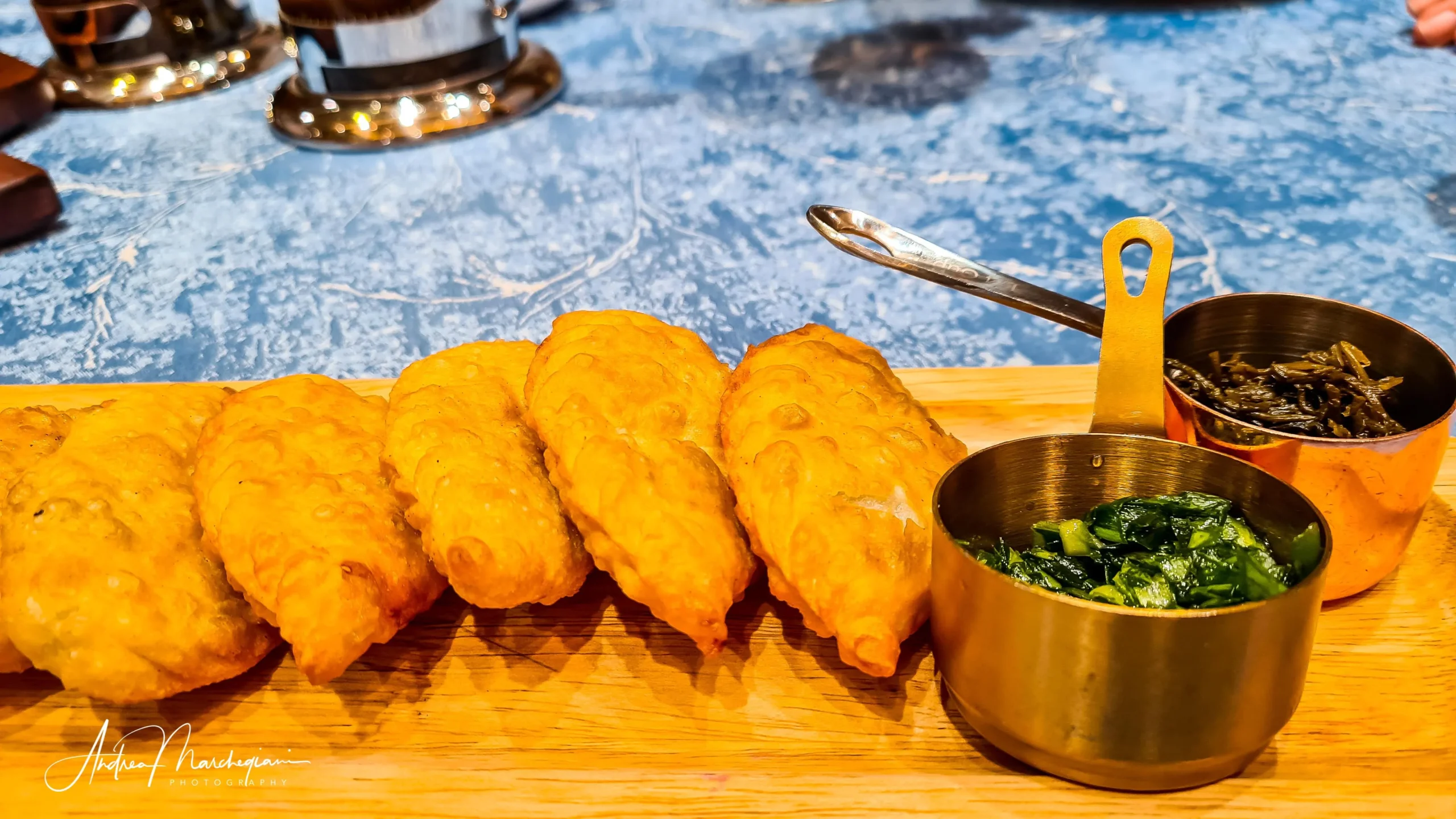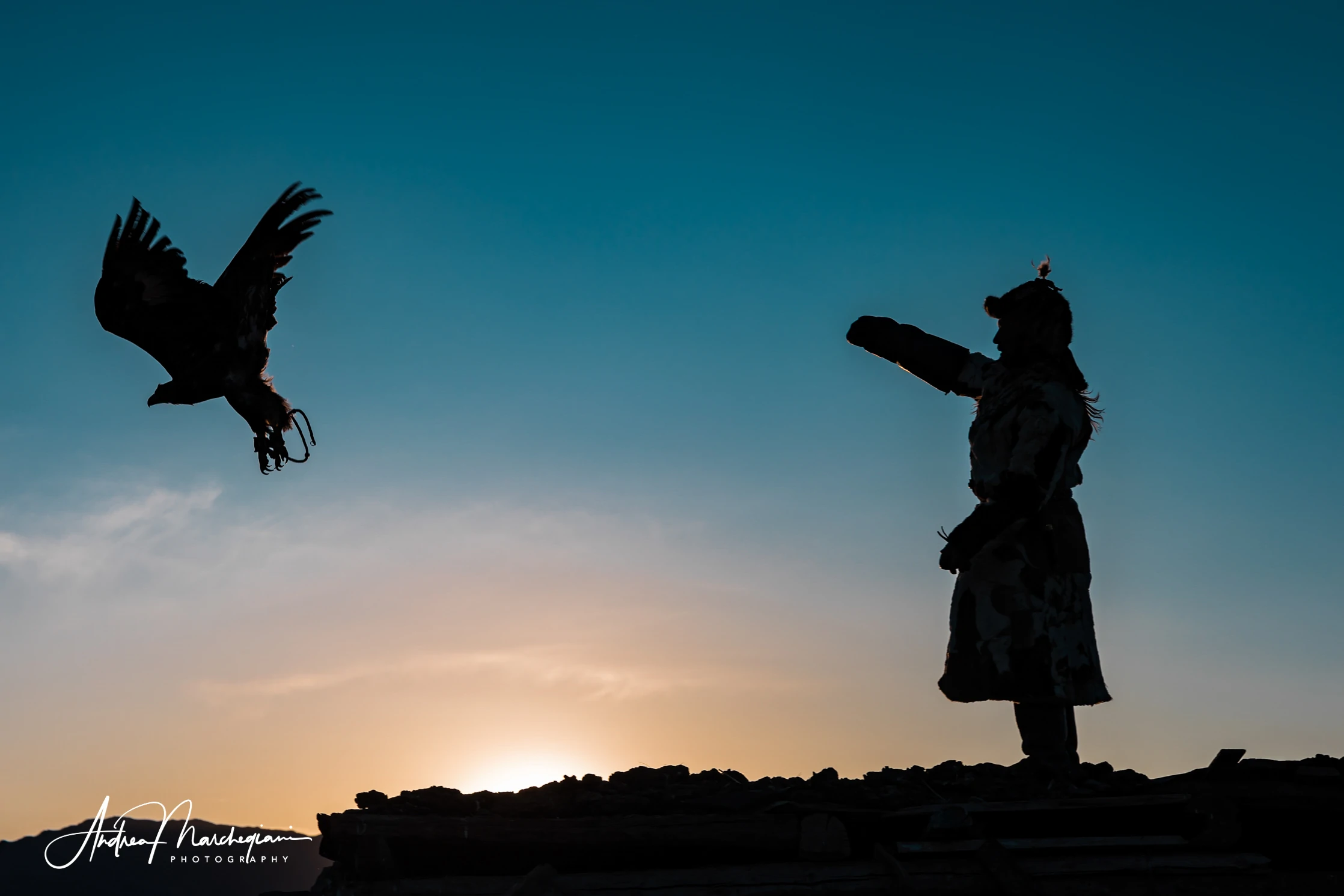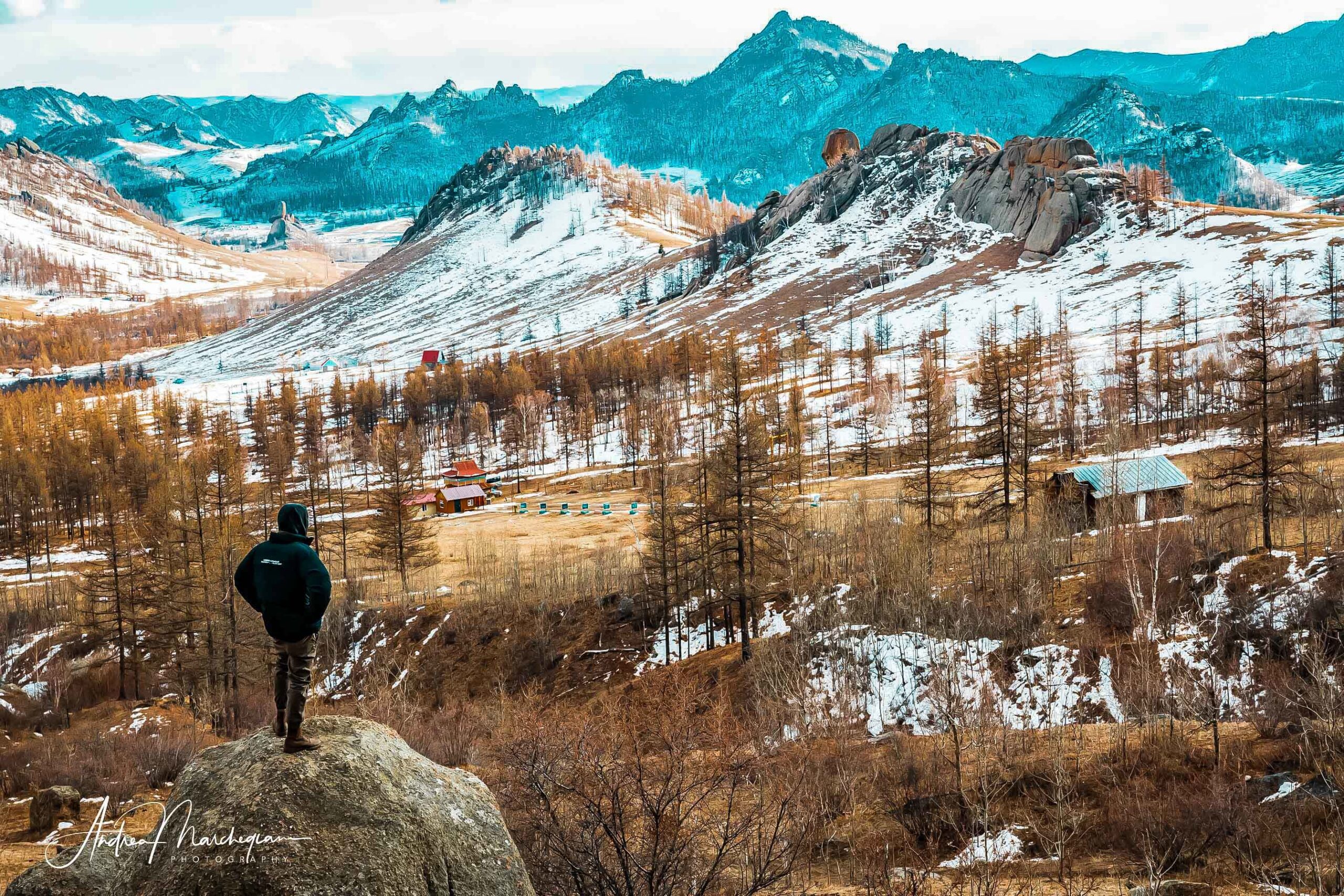
- Home
- Photo Galleries
- Portrait Photography
- Landscape Photography
- Street Photography
- China
- Ethiopia
- India
- Holy Ganges
- Varanasi
- Varanasi Ganga Aarti
- Varanasi, Manikarnika Ghat
- Varanasi Streets & Alleys
- Varanasi Demolition
- Varanasi Fruit Market
- Sarnath
- Brick Kilns
- Tamil Nadu, Chennai & Mamallapuram
- Tamil Nadu, Fort Tirumayam & Madurai
- Tamil Nadu, Tiruvannamalai & Thanjavur
- Kerala, Munnar
- Kerala, Peryiar
- Kerala, Backwaters
- Kerala, Kochi
- Kazakhstan
- Myanmar
- Senegal
- Uzbekistan
- Travel Blog
- China
- Ethiopia
- India
- Tamil Nadu & Kerala
- Varanasi
- Whato to do in Varanasi
- Varanasi Life along the Ghats
- Varanasi Death along the Ghats
- Varanasi Ganga Aarti Ceremony
- Varanasi demolished to honor Shiva
- Varanasi Fruit Market
- “Varanasi, A Journey into the Infinite”
- Sarnath
- All about River Ganges
- Holy Shit. All about Indian Cow Dung
- Clean India Project
- Brick factories
- Tilaka, pundra, bindi: what is the mark on Indian foreheads?
- Kazakhstan
- Mongolia
- Ulaanbaatar, the coldest capital in the world
- What to do in Ulaanbaatar
- Chinggis Khan Museum, 6 floors of Mongolian history
- Gorkhi-Terelj National Park and Bodgkhan Natural Reserve
- Altai Mountains, Things to do in Olgii and Sagsai
- Living with the Eagle Hunters
- Sagsai Eagle Festival
- Navrus Festival
- Xöömej, Mongolian throat singing
- Mongolian Food
- Myanmar
- Senegal
- Uzbekistan
- Latest Posts
- Photography Blog
- About
- Prints
If you are considering a trip to a remote, boundless place on the edge of human civilization, Mongolia is definitely the country for you. Among the most sparsely populated in the world, it boasts breathtaking landscapes and unique cultural traditions.
In addition to the well-trodden itineraries, which typically include a visit to the capital city of Ulaanbaatar, the Gobi Desert, and the Gorkhi-Terelj National Park, I recommend considering the Altai Mountains, located in the far west of the country, bordering Russia and China.
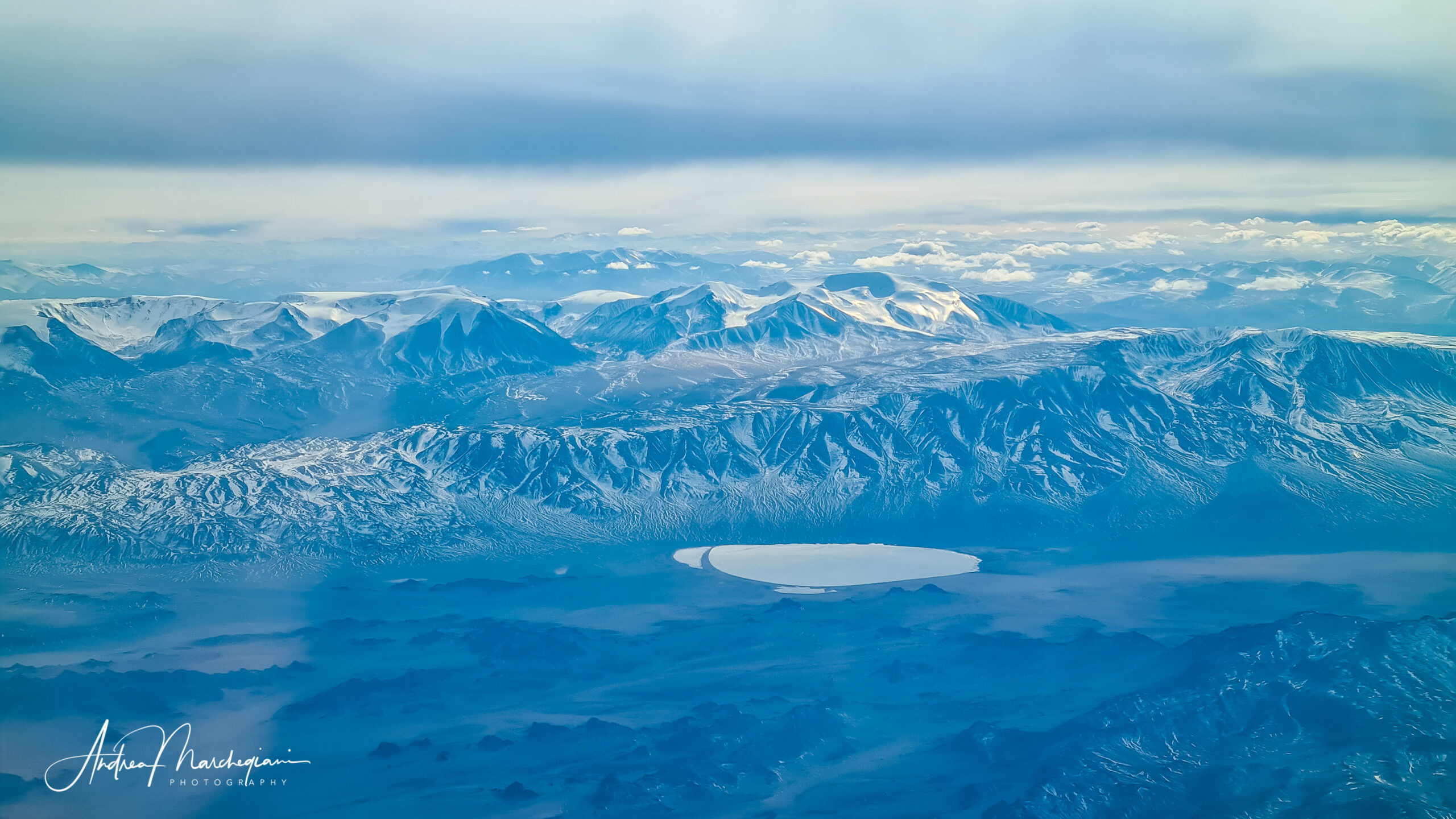
Share with your friends:
Located over 2,000 kilometers away from the capital city, with peaks exceeding 4,000 meters, you will feel like you’ve landed on another planet amidst icy steppes inhabited by bears, foxes, and wolves, and treacherous trails where semi-wild horses graze.
In the Altai Mountains, it’s normal to feel lost, without any reference points. Fortunately, if you look closely, you’ll notice that the horizon is dotted with isolated farms forgotten by time. You’ll feel compelled to reach them and seek refuge, and it’s here that you’ll experience the hospitality of Kazakh shepherds who still live in traditional Mongolian gers, raising magnificent cashmere goats and practicing eagle hunting.
It is truly a lost paradise, reserved only for the most resilient, both because it’s not easy to reach and due to the harsh temperatures that sweep the area for a significant part of the year. After all, the most beautiful things always come at a price. Are you willing to pay it?
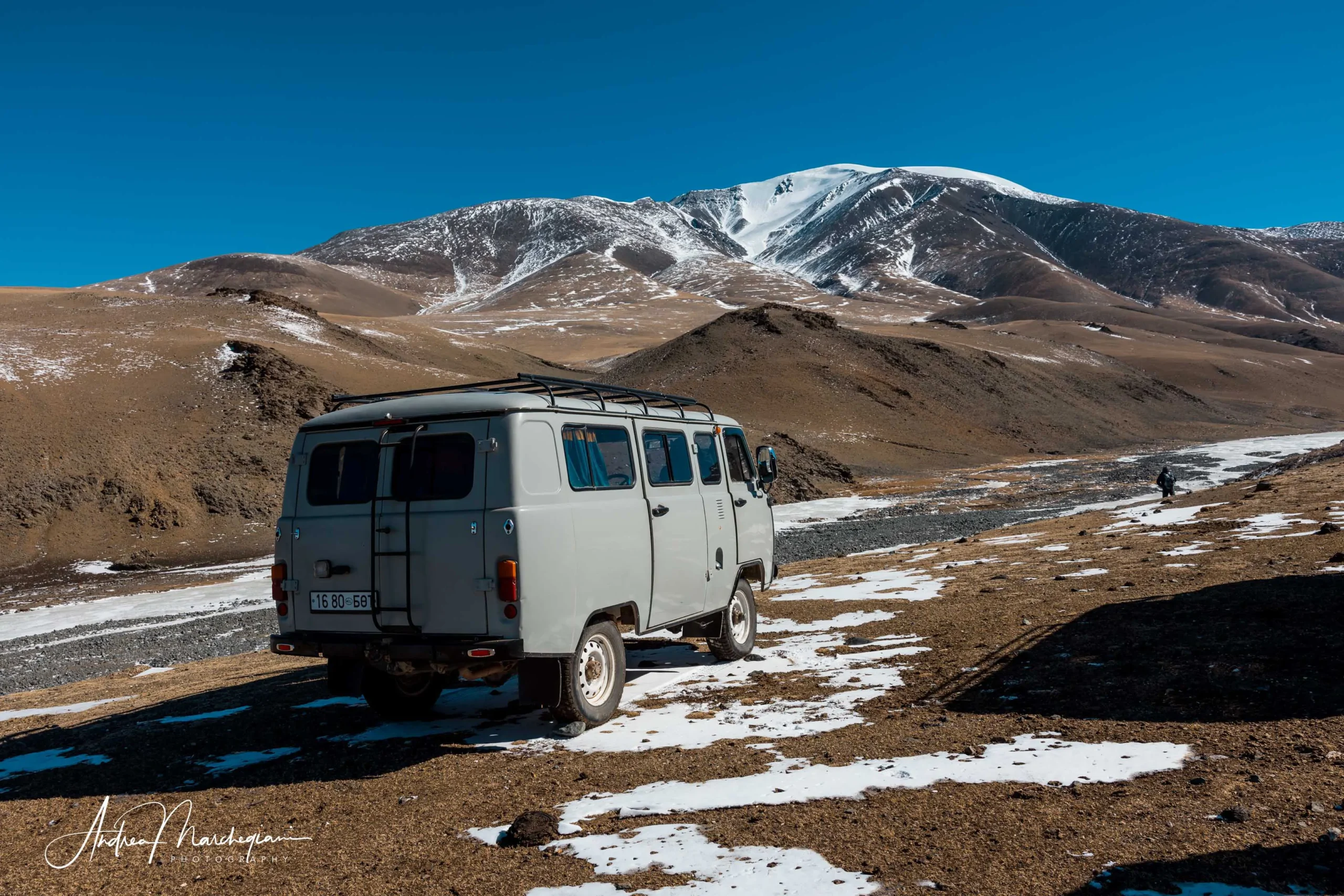
How to reach the Altai Mountains
The Altai Mountains are a mountain range that spans several countries in Central Asia, including Mongolia, China, Russia, and Kazakhstan. The Mongolian part of the Altai Mountains is located in the Bayan-Ölgii province, in the westernmost part of the country.
Reaching the Altai Mountains from Italy requires at least two days of travel, as you first need to reach Ulaanbaatar, the capital city, and then wait for the first available flight to Olgii, the capital of the Bayan-Ölgii province.
It’s an internal route usually scheduled twice a week. For this reason, it is often necessary to spend a night in the capital, which, despite its bad reputation, actually has a lot to offer.
Once you land in Olgii, you will need to travel by jeep or off-road vehicle. Don’t miss the opportunity to try the indestructible Russian UAZ vehicles, which still have all mechanical components (no electronics) so that drivers can fix any potential breakdown with their manual skills!
It’s important to note that the Altai Mountains are a remote and wild region, so it is advisable to carefully plan your trip, ensure you have the appropriate equipment, and follow safety guidelines.
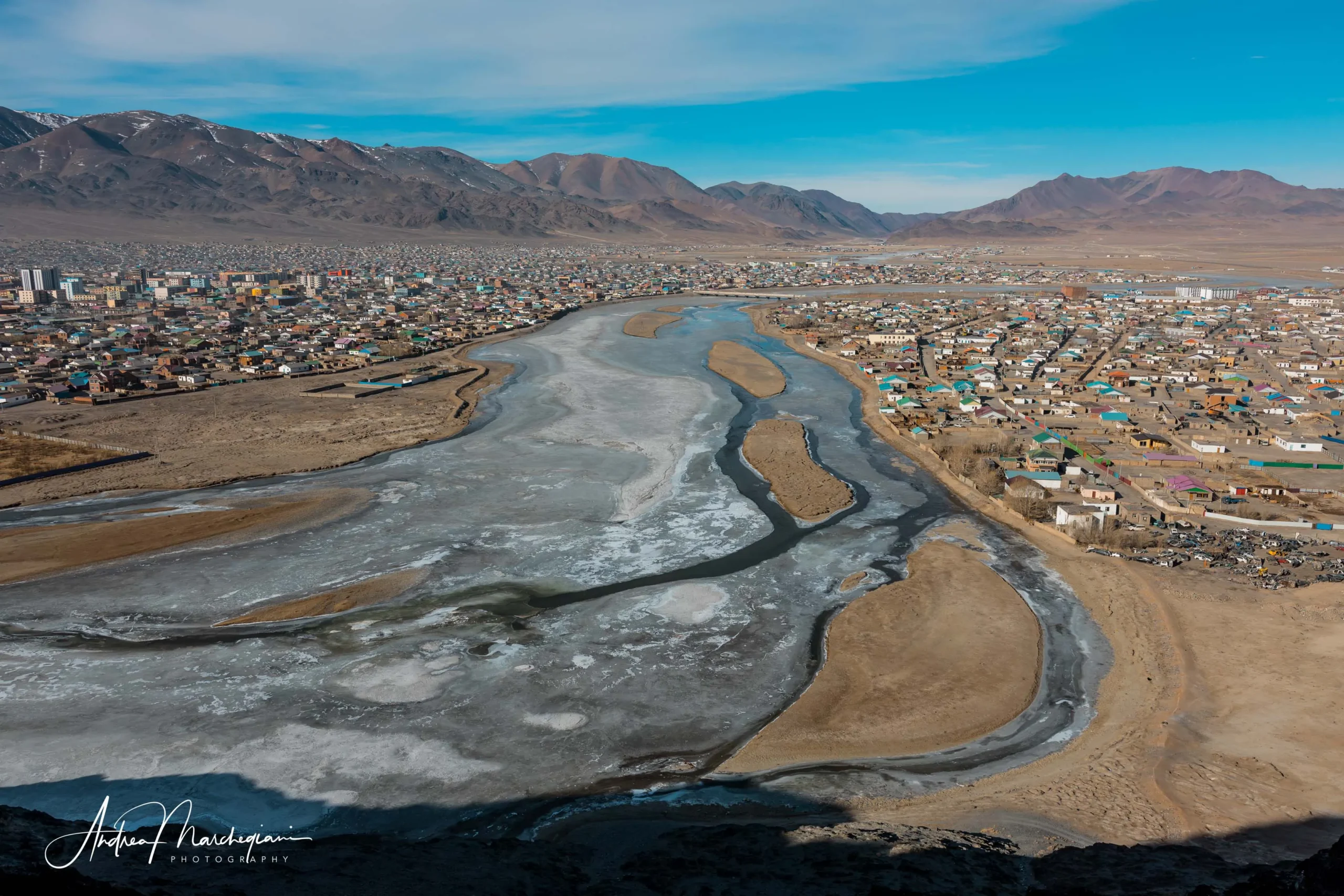
Welcome to Olgii and Sagsai
Olgii and Sagsai are two must-visit locations if you decide to explore the Altai Mountains.
Olgii is the capital of the province, and you will be amazed by its small size, comparable to a small Italian town. With a population of around 30,000 inhabitants, Olgii is a network of streets and intersections surrounded by magnificent mountain landscapes and vast steppes.
On the other hand, Sagsai is a somon (sub-district) located approximately 50 kilometers east of Olgii. The roads to reach it are all unpaved, filled with potholes and large rocks.
Only about 5,000 people live there, scattered in farms that are kilometers apart. But it is here that you will experience absolute peace, amidst horse and cashmere sheep farms. A herder family will be more than happy to accommodate you, and you can live according to their customs and rhythms.
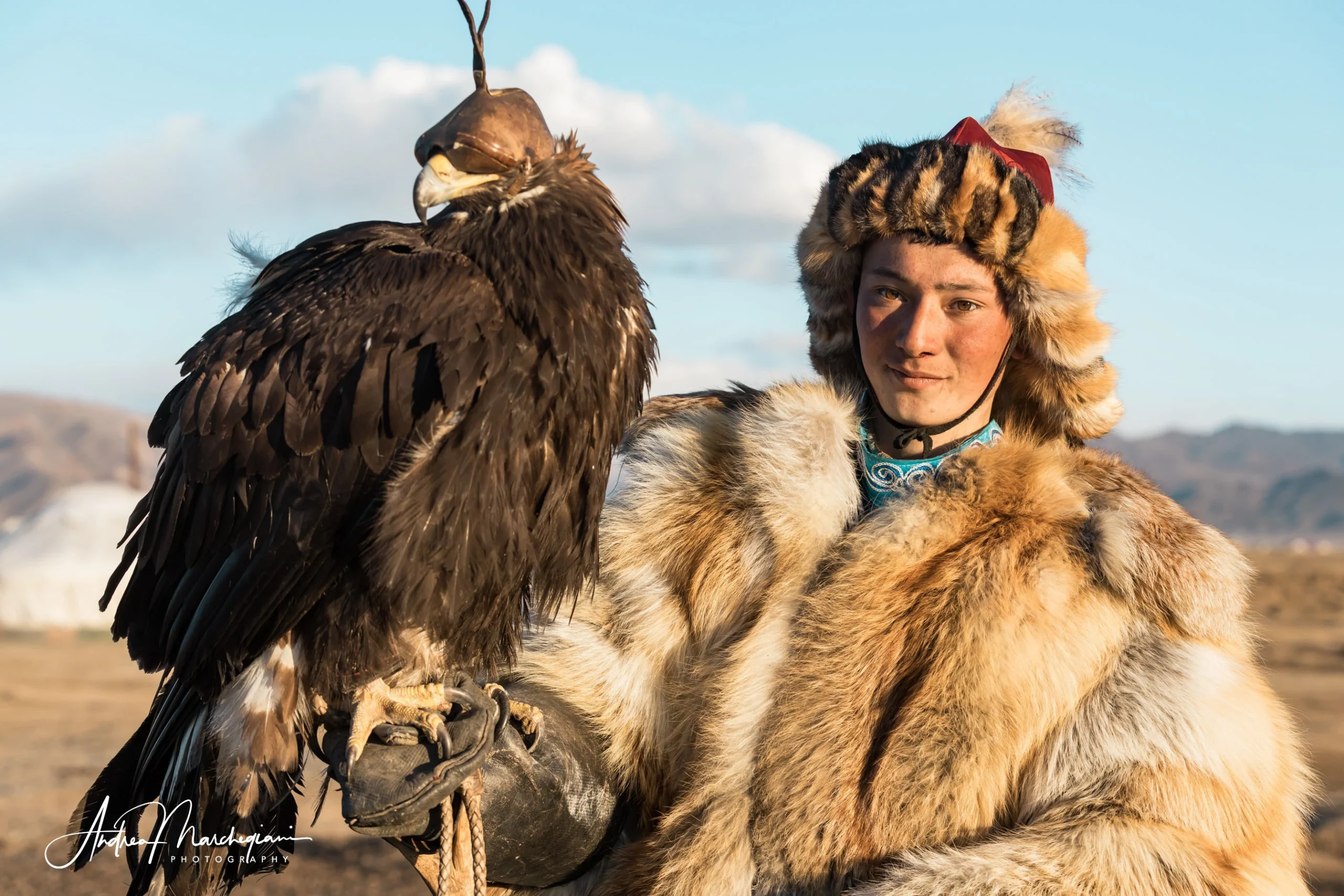
The Altai Mountains, the land of Mongolian Kazakhs and the Eagle Festival
The population of this area is primarily composed of Kazakh herders, who follow the Muslim faith and have distinct traditions from the Mongolians living in the rest of the country. Settling here to escape the Soviet regime, this ethnic minority is devoted to nomadic pastoralism and is renowned for their hospitality and an ancient practice that has gained popularity today: eagle hunting.
In Olgii and Sagsai, two significant Golden Eagle Festivals take place, attracting tourists from all over the world. During these festivals, eagle hunters compete to demonstrate their skills and showcase their loyal and adept eagles.
Visiting this wild setting will guarantee you incredible experiences, unforgettable photos, and precious memories.
Here are some tips on what to do and see in Sagsai and Olgii in Mongolia.
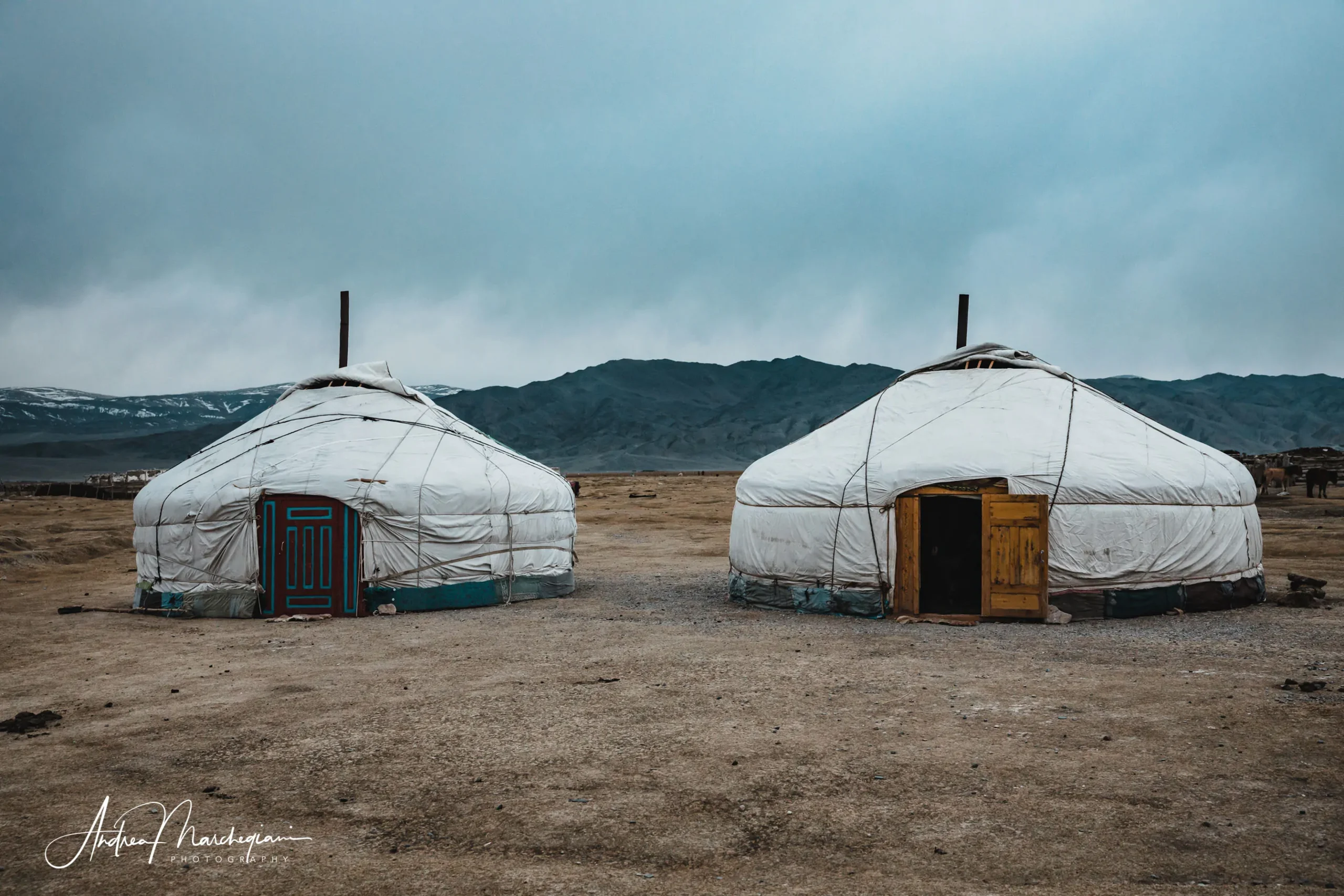
Things to do in Sagsai and Olgii in Mongolia
My advice is, once you land in Olgii, head straight to Sagsai to immerse yourself in the local traditions as soon as possible. Here, vast steppes, a simple way of life, and plenty of magic await you.
1. Stay with a Kazakh herder family
An increasing number of Kazakh herders living in remote farms in Sagsai are opening up to tourism and hosting foreign travelers. Don’t expect grand ceremonies upon your arrival, but if you’re seeking an authentic experience, there’s no better way to have it!
The farms are typically small stone buildings, inhabited in winter to withstand the extreme temperatures, while in spring and summer, they move into traditional Mongolian gers, which are quick and easy to set up.
Next to the farm, you’ll find the stables for cows, horses, and cashmere goats. However, don’t expect the animals to be confined inside. On the contrary, they roam and graze freely and are only kept in the stables during the coldest nights of the year.
These animals are semi-wild, coexisting with the people who feed them, so they have no reason to run away. They are organized in hierarchical herds, just as they would be in the wild. Seeing them roam freely around the farm is truly exciting.
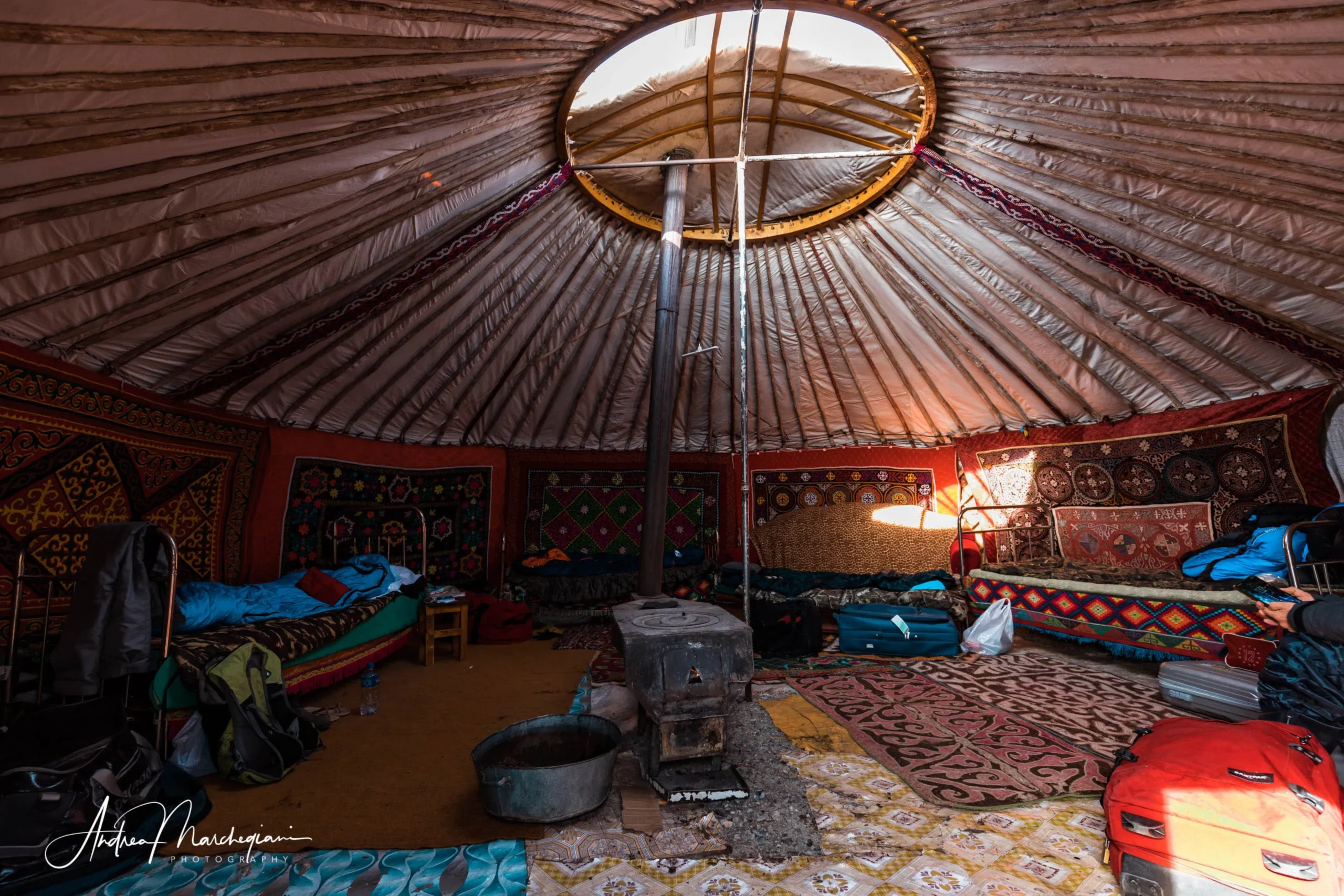
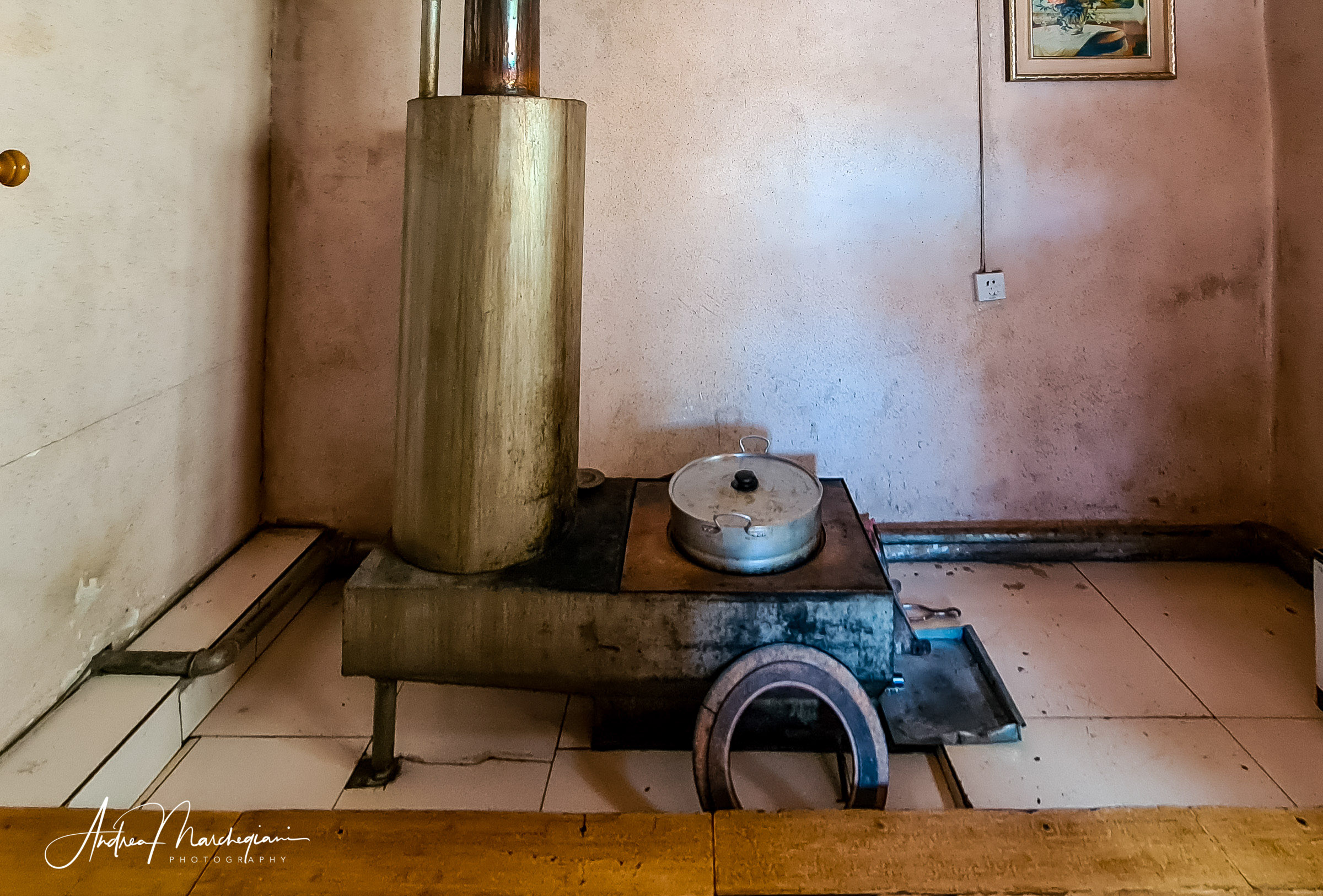
2. Sleep in a ger
During your stay, you will be asked if you prefer to sleep in a house or a ger. I chose to stay in a ger, and despite the cold winter nights, I have never regretted it.
A ger is a circular tent made of fabric, held up by a wooden frame. It has a vent at the top to allow air circulation in the summer, and a removable cover to retain heat in the winter.
At the center of the ger is a coal stove, which serves as the heart of the tent. Mongolians use it both for heating and cooking. Once the coal is lit, it is actually fueled with dried animal dung from the farm. It’s cost-effective and eco-friendly.
The beds are arranged around the outer perimeter. If you expect latex mattresses, you’ll be disappointed, but if you’re satisfied with a bed to lay your sleeping bag on, you’ll sleep just fine.
One last detail: there are no indoor toilets. The toilets are located outside and consist of a hole in the ground.
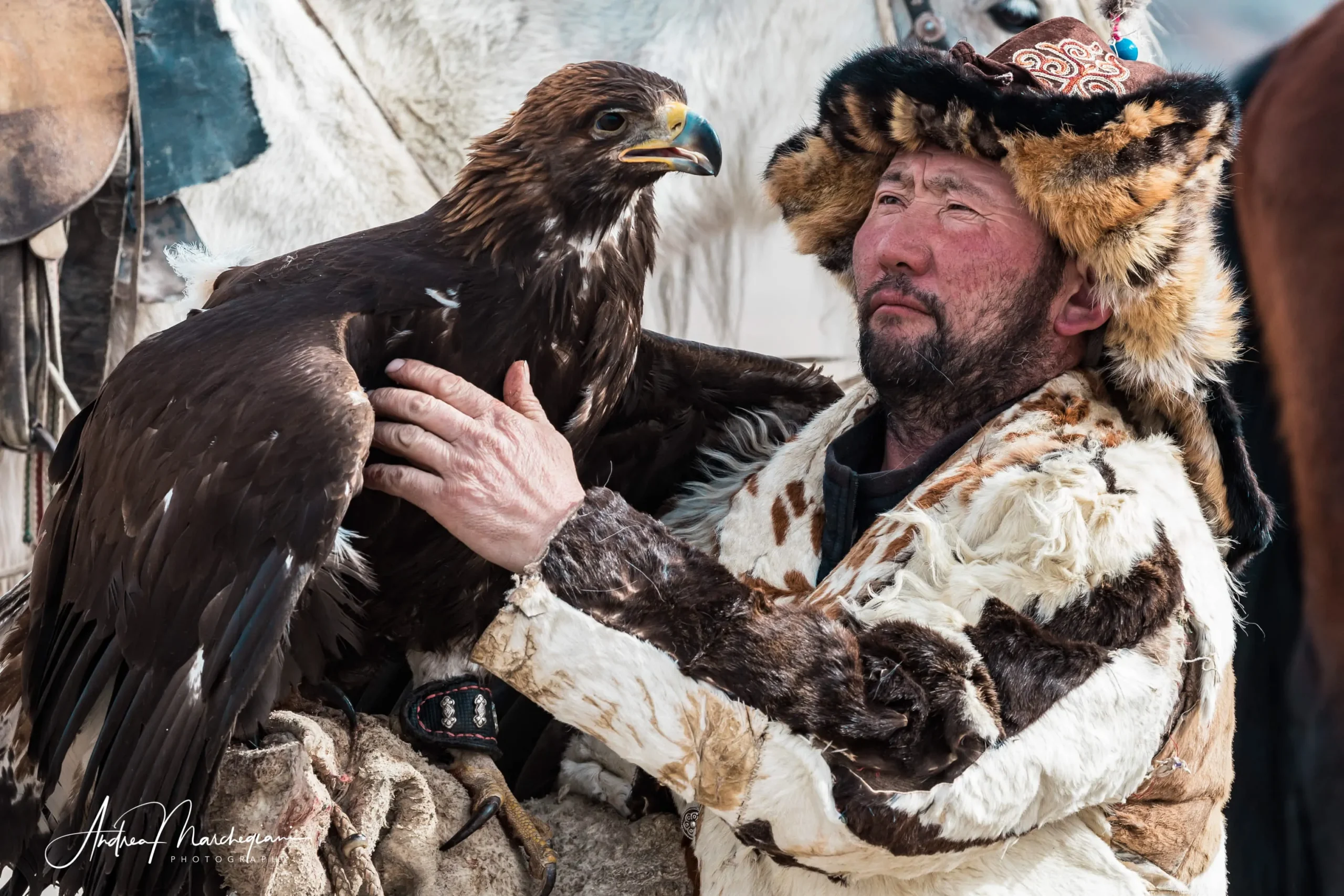
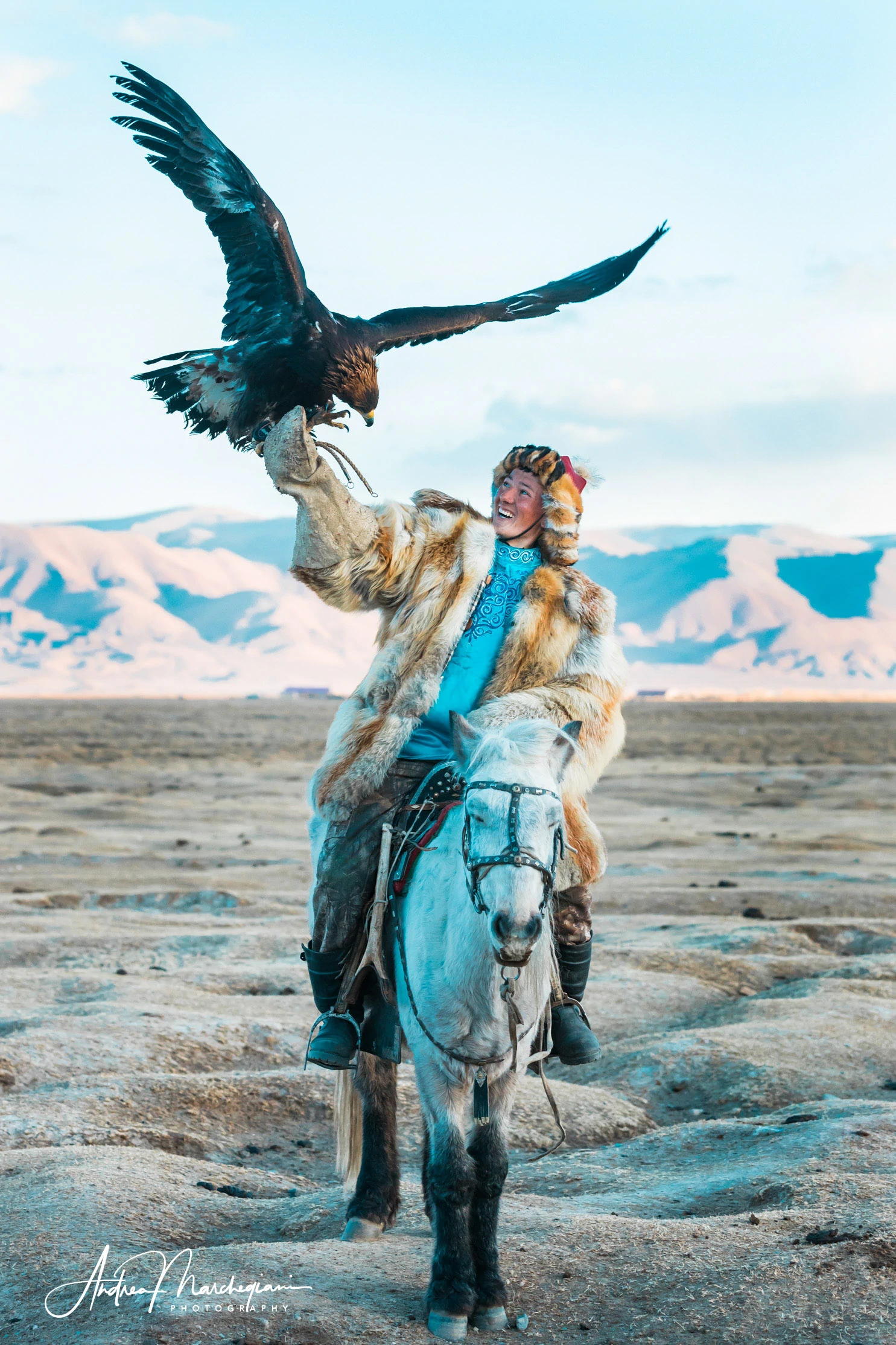
3. Witness the training of golden eagles
Often, herder families are also eagle hunter families, so being their guests will give you a great opportunity to see how they train the eagles. Each eagle hunter has multiple golden eagles and trains them with great passion for fox hunting.
This ancient practice usually takes place during winter and is carried out in the mountains. The hunter rides up to the snowy peak with the eagle perched on their arm. When the eagle spots a fox, it swoops down and captures it, bringing it back to the hunter. The hunter will then use the fox’s fur to create beautiful traditional coats.
There are many fascinating aspects to learn about eagle hunters, how they train their eagles, and how they release them back into the wild at the end of their time together. If you want to know more, I discuss it in detail here.
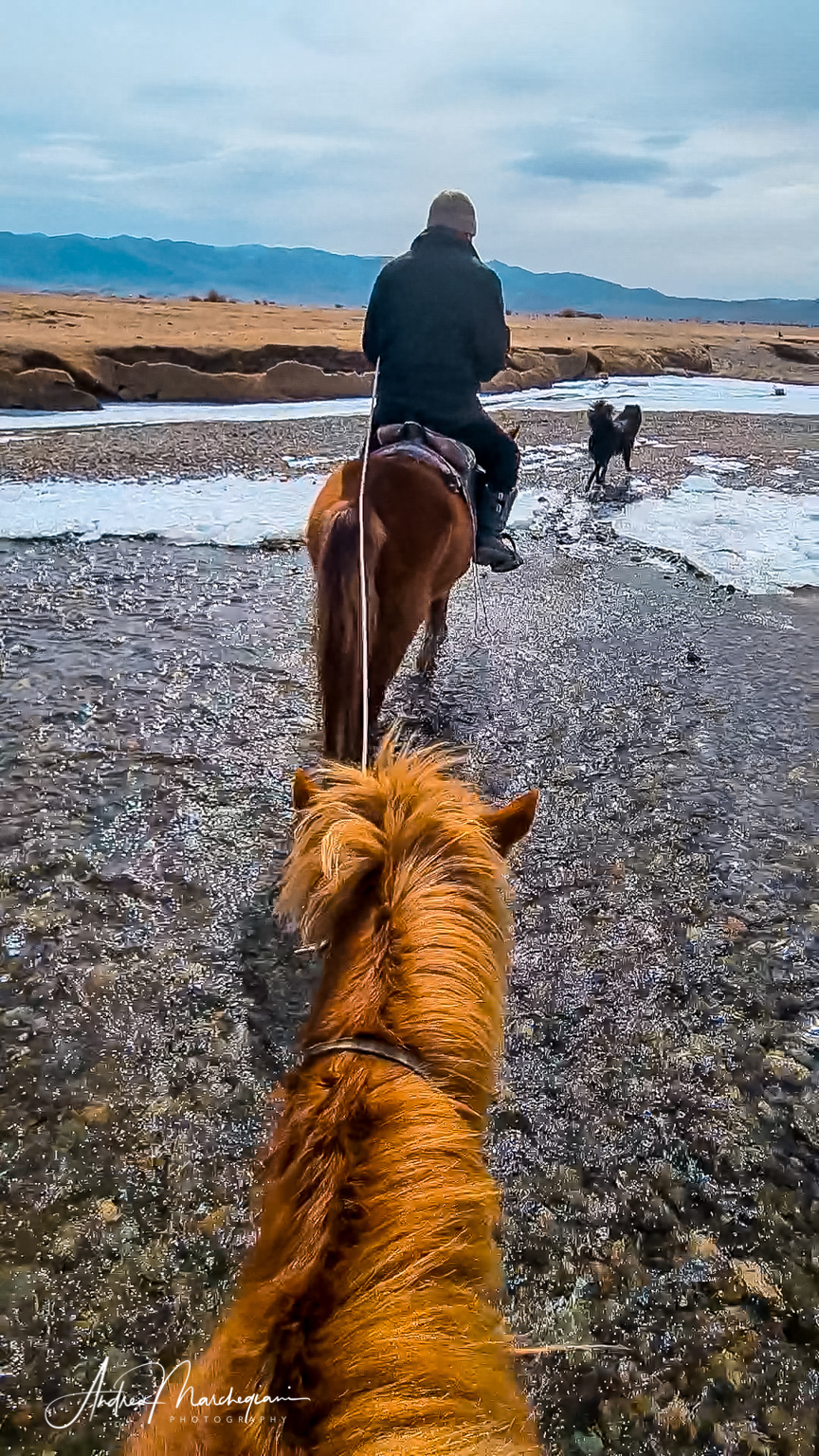
4. Horseback riding in the steppe along the Sagsai River
Riding the semi-wild horses of the Altai Mountains is one of the most memorable experiences during my days in Sagsai. You wake up in the morning, saddle up the horses, and gallop for hours across the vast Mongolian steppe.
Every now and then, you ford crystal-clear streams where the horses love to drink, you encounter the guard dogs of nearby farms, and you spot cows that have wandered off to give birth to a beautiful calf.
You take a relaxed break for lunch, improvising a picnic with camping tables and chairs, and you taste typical Mongolian dishes, from the flavorful khuushuur, fried mutton dumplings, to tsuivan, stir-fried noodles (always with mutton!). If paradise exists, you would imagine it to be like this.
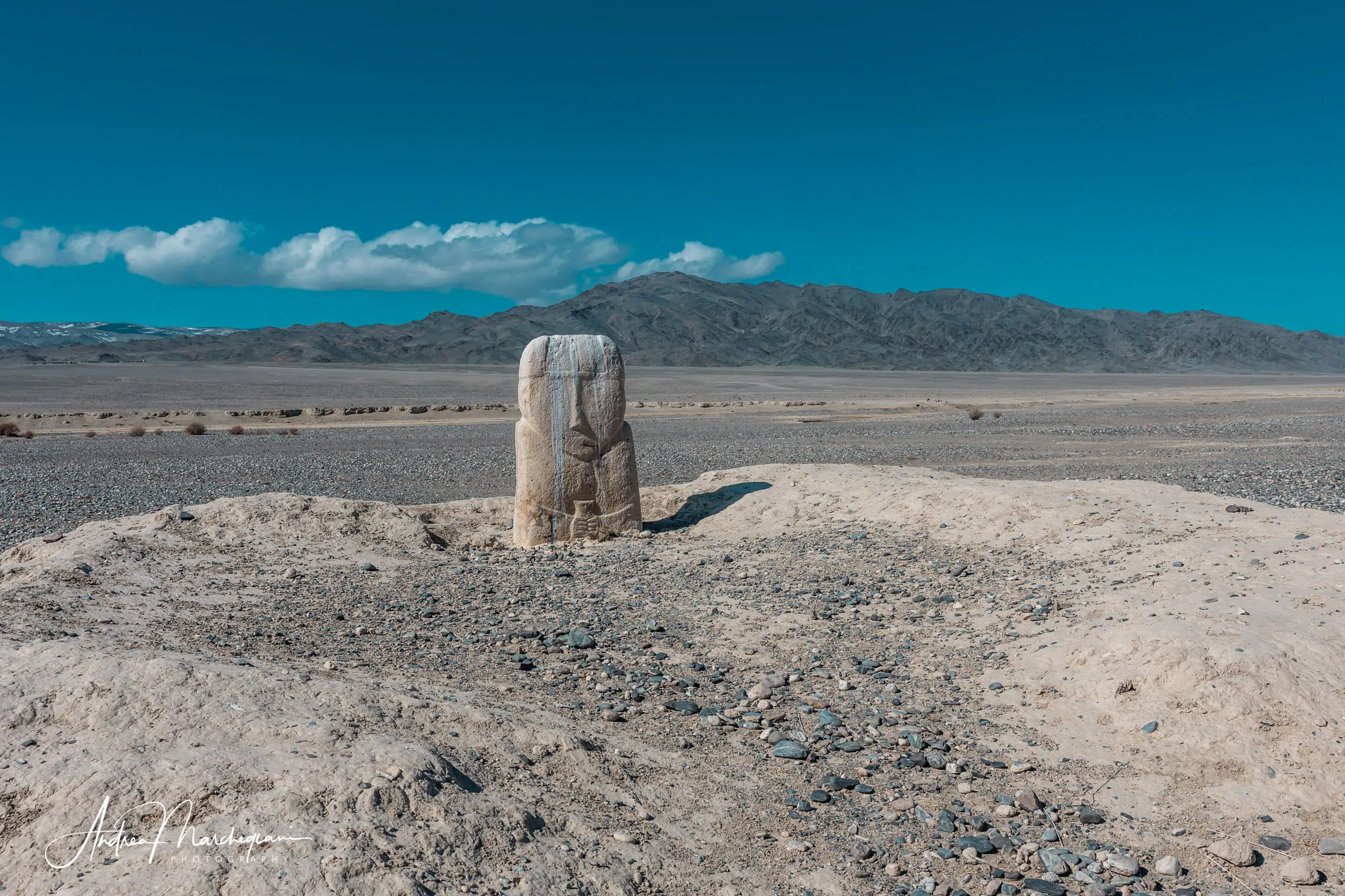
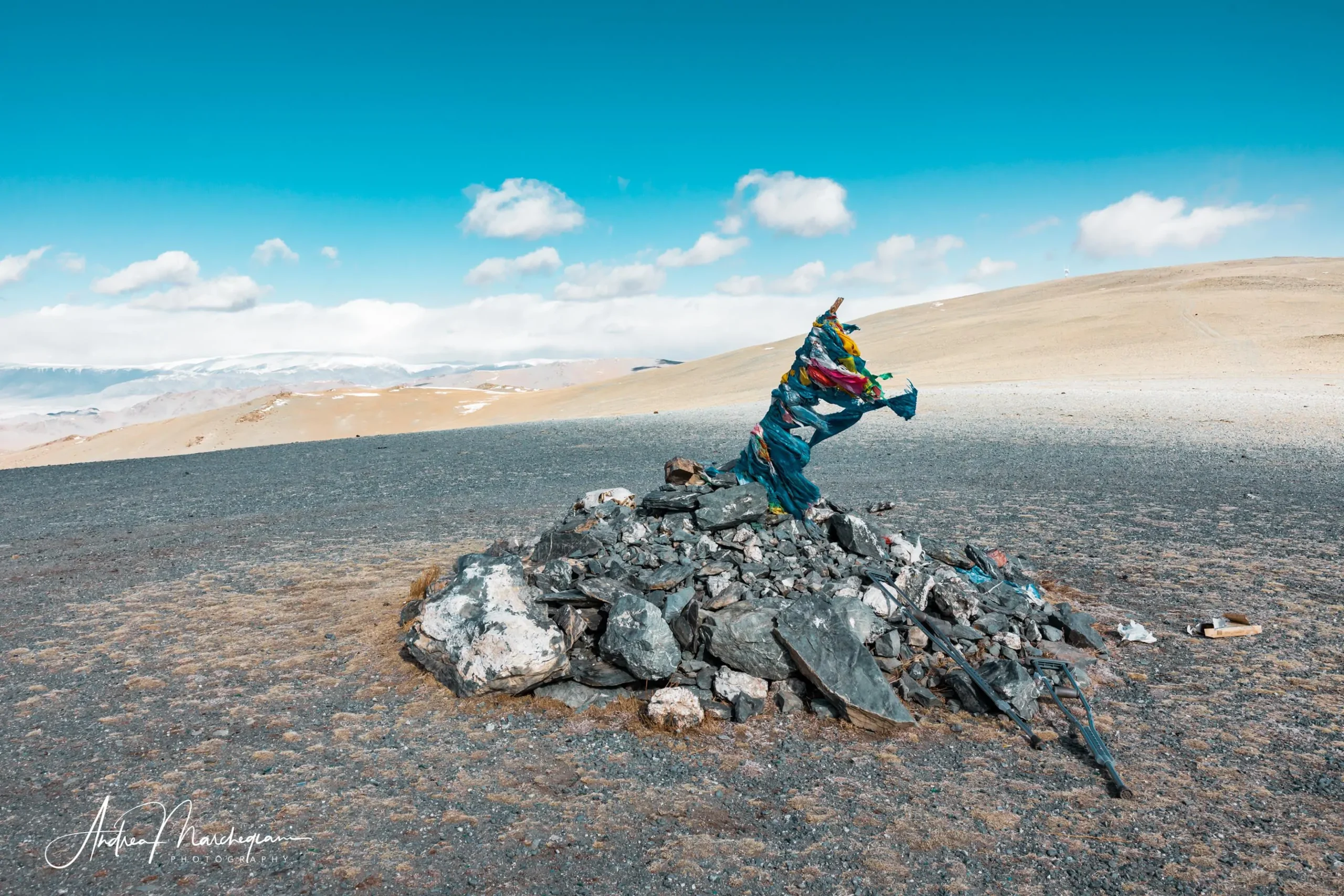
5. Visiting the Turkic Stone Men and Shamanic Ovoos
The steppe of the Altai Mountains holds unexpected archaeological treasures that will immerse you in the history and religion of the region: the Turkic Stone Men and Shamanic Ovoos.
The Turkic Stone Men are stone statues depicting human busts. They are ancient tombs dating back to the 6th-8th century AD, containing the remains of individuals deemed worthy of a lasting burial. It is not uncommon to find remnants of clothing or objects belonging to the deceased inside. It is estimated that there are over 500 Stone Men in Mongolia, primarily concentrated in the Altai region, dating back to the era of Turkic domination in the area.
Ovoos, literally meaning “piles of stones,” are clusters of rocks and stones with colorful flags planted on top. They serve as markers for places dedicated to shamanic rituals, which are widespread in Mongolia. If you come across an Ovoo, stop and walk around it three times: it is believed to ensure a safe journey.
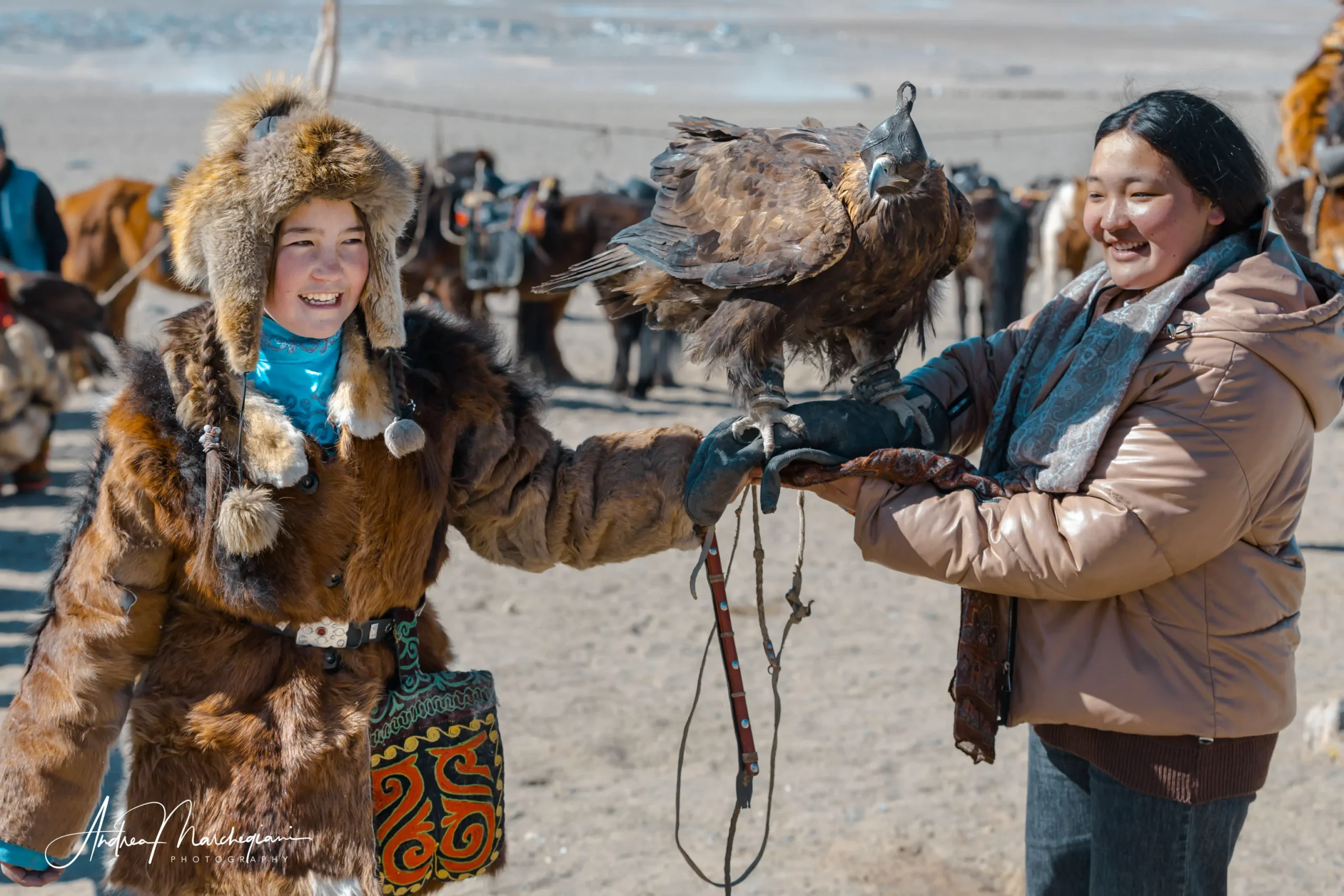
6. Attending the Golden Eagle Festival
The Eagle Festival in Olgii is perhaps the main reason why tourists from all over the world flock to the city. It takes place in October, but the exact dates vary each year, and it offers unique photographic opportunities.
In Mongolia, there are just over 300 eagle hunters remaining, and almost all of them participate in the festival to showcase their horsemanship and hunting skills. The festival lasts for two days, during which spectators witness various competitions and traditional specialties that test the hunters and their eagles. Tickets should be purchased in advance, and I recommend contacting a local agency that knows the exact location of the competition and can take you there safely. There are no road signs, and the roads are all unpaved, with possible crossings of small streams.
Sagsai also hosts a smaller edition of the festival, bringing together around forty hunters and a smaller number of spectators. Starting from 2023, the October edition is accompanied by a festival on March 21st, which celebrates the arrival of spring and the end of the eagle hunting season. Although it takes place within a single day and does not include all the specialties of the main festival, the Sagsai Eagle Festival has its own charm, with a decidedly rustic and authentic atmosphere.
I had the honor of attending the festival in March and captured unforgettable shots.
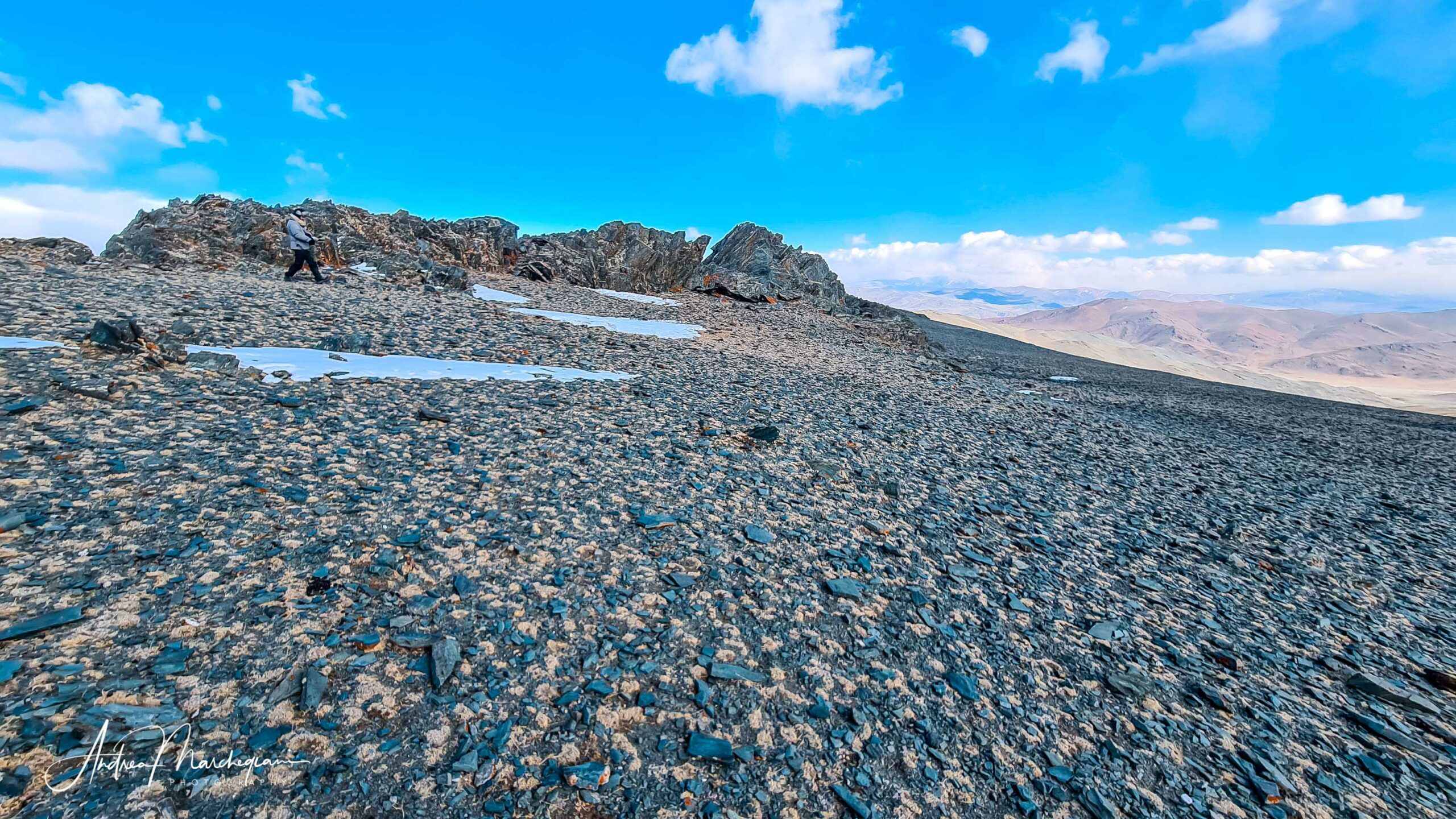

7. Excursions and Trekking
By venturing a few kilometers away from Sagsai and Olgii, you can engage in excursions and trekking that will immerse you in untouched nature and breathtaking landscapes.
Don’t miss the trek to Mount Tsengel Khairkhan, whose summit reaches nearly 4000 meters and is one of the 13 peaks with perennial glaciers in Mongolia. The winds can be very strong here, so make sure to dress in layers, without skimping!
Another fascinating trek is the ascent to Mount Tsambagarav. The views are surreal, but be cautious of the steep climb that can literally take your breath away. It was quite challenging even for seasoned climbers I traveled with—I couldn’t catch my breath and had to stop and turn back.
On your way back, take a moment to enjoy the splendid views of Lake Tolbo. In winter, it freezes over, and you can traverse it in a four-wheel drive vehicle.
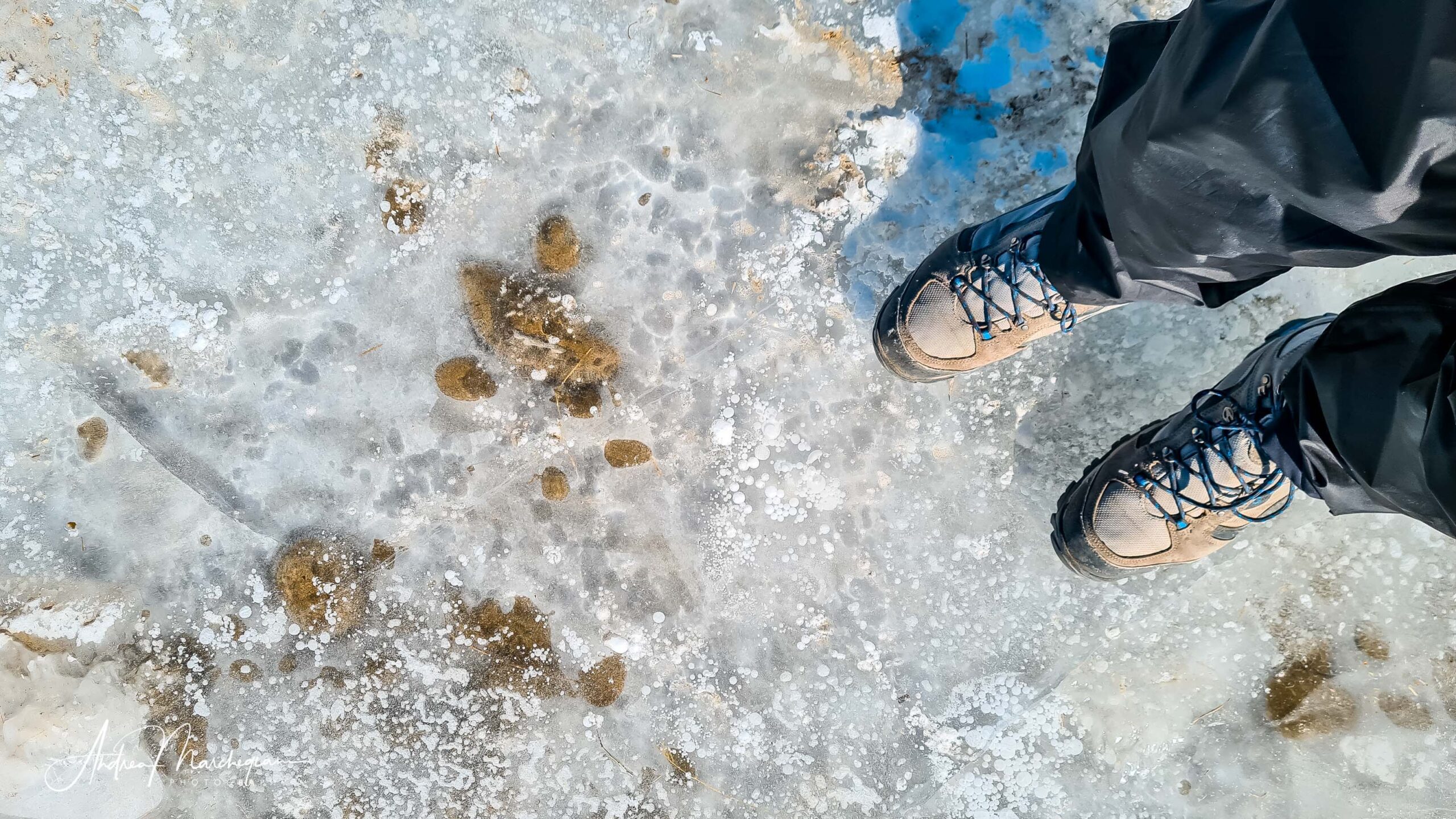
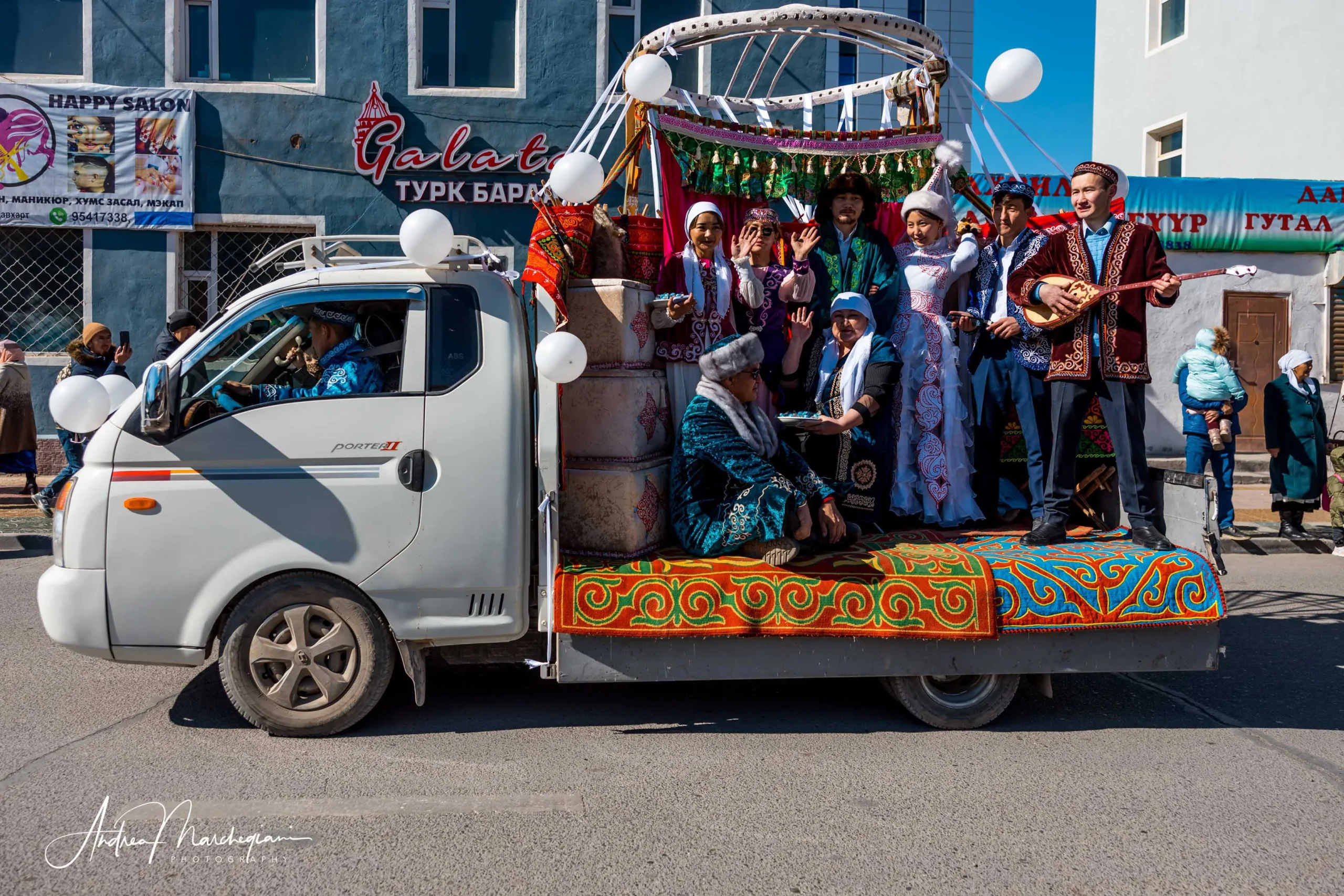
8. Participating in the Navrus Festival
If you’re fortunate enough to visit Olgii in March, don’t miss the city parade for the Navrus Festival, a celebration that coincides with the arrival of spring. The streets of the small town are adorned with colorful banners, and there are processions of floats, horses, and various local associations, including the eagle hunters and sports teams.
It’s a truly splendid event that immerses you in a lively atmosphere and brings joy to the crowd. You’ll also have the opportunity to taste delicious local dishes, which are offered for free to everyone as a symbol of prosperity and friendship.
The festival concludes in the main square with a grand concert attended by the Mongolian president himself.
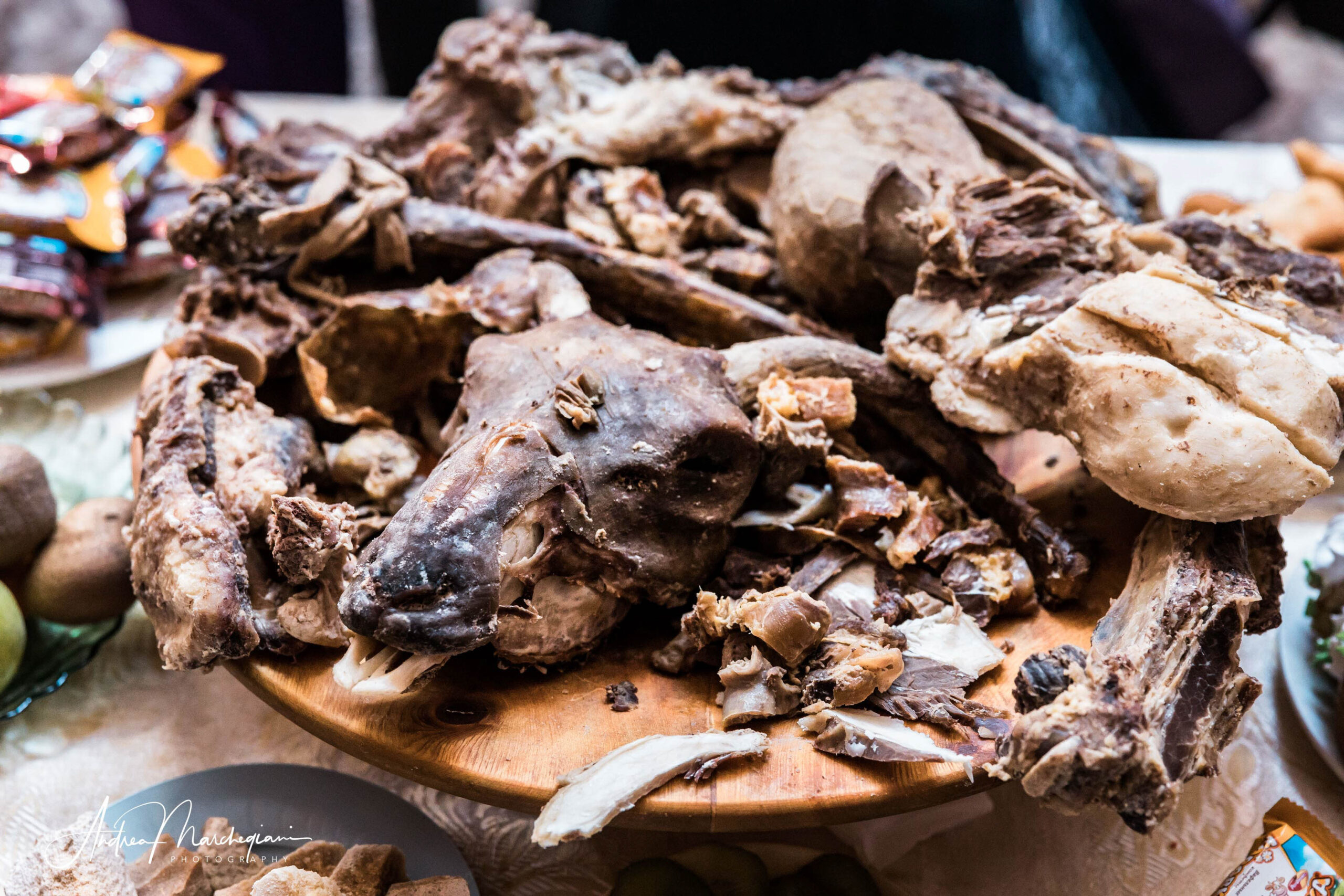
9. Celebrating the Arrival of Spring by Dancing, Singing, and Eating Sheep’s Head
In March, alongside the Navrus and Sagsai Eagle Festival, Mongolians prepare unforgettable dinners to share with their relatives and friends. If you’re their guest, forget about being able to decline the invitation.
You’ll spend the evening of March 20th at the table with your hosts, who will serve you Beshbarmak, which means “five fingers” because it is eaten with the hands. It is a stew made from various parts of different animals, including sheep’s head, considered a true delicacy.
If they offer you an eye or brain, don’t hesitate to try it. They are offering you the best part, and refusing food in Mongolia is considered uncivilized!
The evening continues with traditional singing and dancing: Mongolians are excellent singers, so be prepared with some songs from your own national music repertoire, or you might feel a bit out of place!
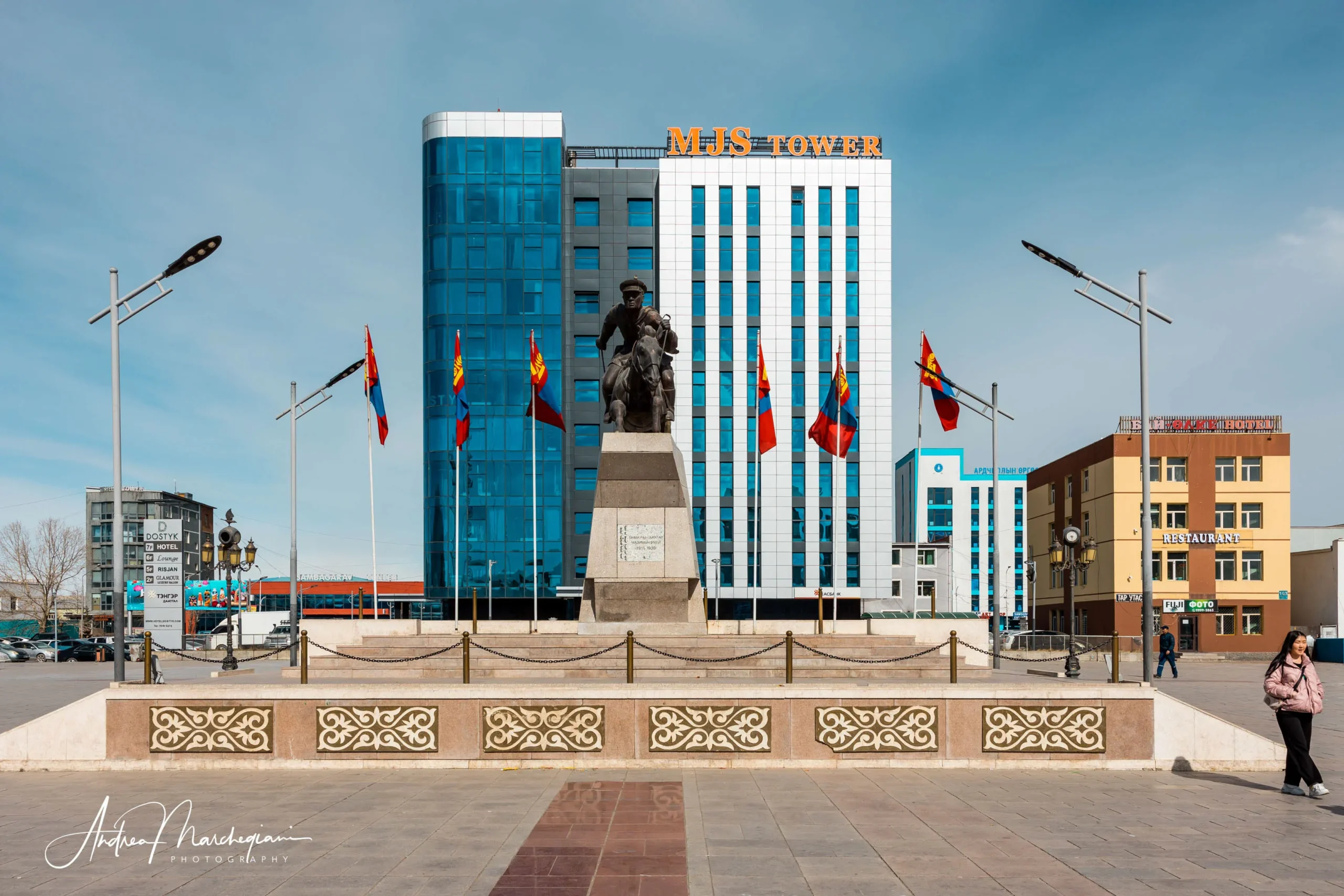
10. Shopping in Olgii
The center of Olgii is a suitable place to spend some money in search of souvenirs and local products.
Fabrics, clothes with delightful patterns, and high-quality reindeer fur boots will captivate women, while the numerous brands of vodka will intrigue men.
In Olgii, there are many shops, malls, and local markets. Seek advice from your guide, and if in doubt, start from the central square.
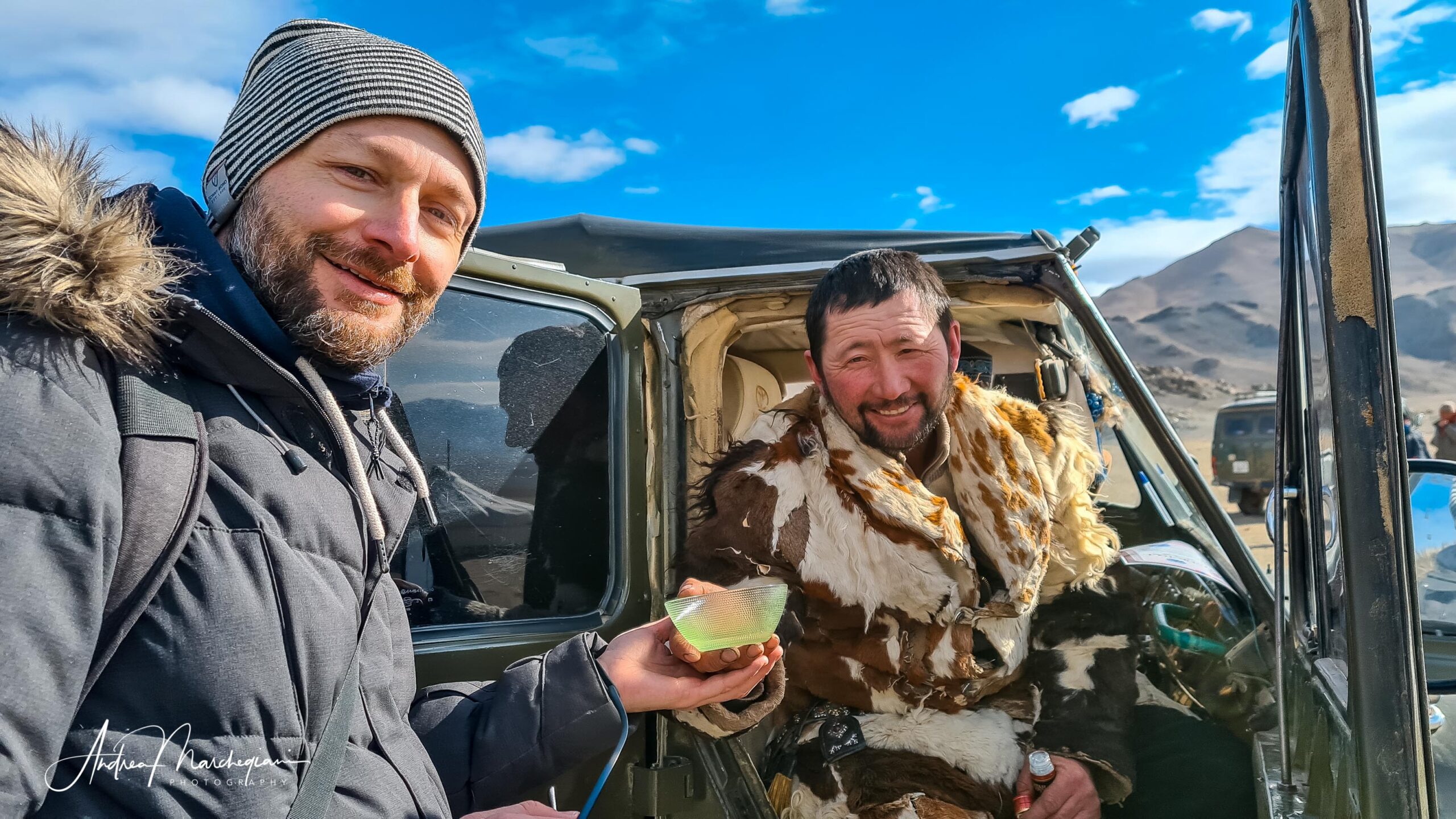
Bonus: What to Give and What Not to Give to Mongolians
If you wish to show your appreciation for the service provided by your guide, drivers, and the herders who hosted you, be cautious about what you read in tourist guides.
Perhaps in the past, Mongolians appreciated tourists giving them toothbrushes, toothpaste, cigarette packs, bags of rice, and salt. However, today Mongolia is a modern country where essential goods are readily available.
If you don’t want to come across as somewhat racist Westerners, give your hosts something they can genuinely appreciate. When in doubt, ask openly. Mongolians are very open and straightforward people.
During my trip to Mongolia, I was fortunate to have extensive conversations in English with my guides, who advised me on what gifts to give on different occasions.
If you are invited to dinner at a local family’s home, you can give a bottle of vodka and some candies. Yes, entire sacks of candies. Supermarkets are filled with them because Mongolian dinners don’t end with dessert but with a handful of candies.
If you want to thank your guide at the end of the trip, you can buy a bottle of premium vodka, but the best gesture is undoubtedly leaving an appropriate tip. The cost of living in Mongolia is slightly lower than in Europe, so base your tip on figures in line with household standards.



